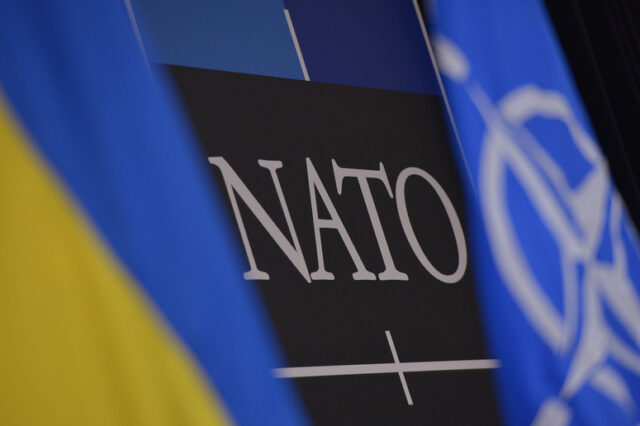
NATO’s 2023 Summit: Modest Expectations, Modest Results (Part Two)
Publication: Eurasia Daily Monitor Volume: 20 Issue: 114
By:

*Read Part One.
The Vilnius summit’s communiqué (July 11) agreed on by the North Atlantic Treaty Organization (NATO) members slightly advances Ukraine’s membership prospects by mentioning the possibility of an “invitation to Ukraine to join the Alliance” (Nato.int, July 11, Paragraph 11). The word “invitation” with respect to Ukraine is unprecedented in a high-level NATO policy document. But the possibility remains theoretical without a roadmap, timeframe or reference to next steps post-Vilnius. While acknowledging Ukraine’s progress on interoperability and political integration with NATO, the communiqué postpones an invitation until “conditions are met,” without attempting to elaborate (see Part One, July 13). Such vagueness can lead to conflicting interpretations and abuse by naysayers down the road.
NATO leaders decided at this summit to eliminate the Membership Action Plan (MAP), a multi-year program from which Ukraine was supposed to graduate before qualifying for a formal invitation of membership. Yet, Ukraine had never been admitted to the MAP program in the first place. Originally held out to Ukraine and Georgia at NATO’s ill-fated 2008 Bucharest summit, the MAP was supposedly a path to membership but was, instead, repurposed into an insuperable obstacle. A German-led “coalition of the unwilling” stipulated that fulfillment of the MAP was a sine qua non precondition to a membership invitation but, at the same time, that Ukraine had to be barred from the program so as to avoid provoking Russia. Instead, NATO’s indecision helped provoke Russia to invade Georgia and then Ukraine twice.
The MAP had worked well for most of the 11 countries that joined NATO in the enlargement rounds of 2004, 2009, 2017 and 2020 (Nato.int, April 19). Every NATO summit from 2009 onward witnessed dramatic efforts by Ukraine, Georgia or both to earn admission to MAP, only to be told that the program was required by NATO but inaccessible to them. In 2021, the Biden administration withdrew Washington’s traditional political support for a Ukrainian MAP and Ukraine’s NATO membership aspirations as such (see EDM, May 6, 10, June 1, 17, September 7, 9, 16, 2021). NATO’s 2022 Summit Declaration omitted Ukraine and Georgia from the section on the “Open Door” policy. And the new Strategic Concept, publicized at that same summit, omitted words such as “membership” or “membership aspirations” with respect to both countries (see EDM, July 7, 8, 11, 13, 2022).
Compared with the 2021 and 2022 documents, therefore, the 2023 communiqué marks a small step forward. It reinstates the goal of Ukrainian membership in NATO and introduces the hypothesis of an invitation to membership (see above). Ultimately, however, this document seems less concerned with strategy than with “language.” A strategically oriented document would have presupposed NATO coalescence around some clear political and military objectives concerning the Russo-Ukrainian war and NATO-Ukraine relations. Such clarity exists in some capitals but not in others.
The Vilnius summit decided on July 12 to elevate the NATO-Ukraine Commission (1997–2023) to a NATO-Ukraine Council (see Part One, July 13). The council held its inaugural meeting at the level of heads of state on the same day, with Ukrainian President Volodymyr Zelenskyy attending. The council’s operating formats at the state leaders’, ministerial and ambassadorial levels, and the periodicity of its meetings, seem to follow the old commission’s design. The new council’s remit is formulated in general terms at this initial stage, for now resembling the commission’s terms of reference (Nato.int, July 13).
The NATO-Ukraine Commission seemed to have exhausted its potential after 26 years. Its main task was that of assessing the implementation of Ukraine’s Annual National Programs (ANPs), mainly concerned with reforming Ukraine’s security and defense sector. The ANPs had operated since December 2008 on a lower level of ambition than the MAP (as they did for Georgia). While Ukraine found itself at war with Russia and its resolve to join NATO rose dramatically from 2014 onward, NATO’s remit “as NATO” confined it to providing non-lethal equipment and technical assistance, from meager funding. Any arms deliveries and troop training were taking place outside NATO’s framework—hence, beyond the NATO-Ukraine Commission’s remit—on a “coalition-of-the-willing” basis, mainly involving the United States, the United Kingdom and Canada, with smaller inputs from several other countries.
The upgraded NATO-Ukraine Council looks set to focus, as did the commission, on security and defense sector reforms and the provision of non-lethal equipment. The council will apparently assess Ukraine’s implementation of “Adapted Annual National Programs” to be introduced. Ukrainian commentators expect the adapted version to be more compact than the ANPs, more sharply focused and, above all, not designed for a multi-year period as the ANPs were. Lengthy implementation periods would further postpone a NATO membership invitation for Ukraine (Yevropeiska Pravda, July 12; Euromaidan Press, July 14).
Beyond NATO’s and the NATO-Ukraine Council’s frameworks, it is the Ukraine Defense Contact Group (Ramstein forum) that coordinates deliveries of lethal materiel and troop training to Ukraine from NATO member and partner countries. Similarly, the Group of Seven countries plan to work out a system of security commitments to Ukraine outside NATO (see Part One, July 13). Both of these forums correspond to a pattern of ad hoc coalitions acting in parallel with the institutional NATO, unconstrained by its laborious decision-making procedures.



